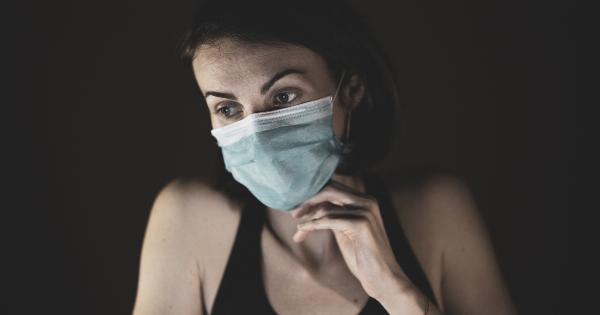The flu is a contagious respiratory illness caused by influenza viruses. It can cause mild to severe illness, and sometimes even lead to death. The flu has been causing havoc for centuries, with the first recorded pandemic dating back to 1580.
Since then, the world has faced numerous outbreaks of flu. In recent history, the most deadly flu pandemic was the Spanish flu of 1918, which claimed the lives of millions of people across the globe. However, a more recent flu pandemic has also caused significant damage.
In this article, we will discuss the flu pandemic that occurred after the year 2000, which has been named as the Flu Pandemic of 2019-2020 or simply, After-138, and its fatal toll.
History of After-138
The flu pandemic of 2019-2020, commonly referred to as After-138, began in Wuhan, China in December 2019. The pandemic was caused by a new strain of influenza virus.
The virus quickly spread across China and then to other parts of the world, eventually leading to a global pandemic. The World Health Organization (WHO) declared COVID-19, the disease caused by the virus, a global pandemic on March 11, 2020, and since then the world has been grappling with various measures to contain the spread of the virus.
Impact of After-138
The flu pandemic of 2019-20 has had a significant impact on the global economy, social life, and individual lives.
The pandemic caused widespread chaos across the world, with countries closing their borders, businesses shutting down, and people losing their jobs. People were asked to stay at home and practice social distancing to prevent the spread of the virus. The healthcare systems across the world were overwhelmed, with hospitals and healthcare workers struggling to cope with the rising number of cases.
The pandemic has affected the mental health of people worldwide, leading to increased levels of stress, anxiety, and depression.
Spread of After-138
The flu pandemic of 2019-20 spread rapidly across the world due to the ease of travel, the contagious nature of the virus, and the initial lack of preparedness of countries to handle the outbreak.
The virus was initially believed to have spread through contact with animals, particularly bats, but it was later revealed that the virus could be transmitted from human to human through respiratory droplets. The virus spread faster in densely populated areas such as cities, which led to more stringent measures such as lockdowns being imposed in many parts of the world.
Symptoms of After-138
The symptoms of After-138 are similar to those of the flu and include fever, dry cough, fatigue, body aches, and difficulty breathing.
It is important to note that some people with the virus may not display any symptoms, which makes it challenging to detect and contain the spread of the virus. However, some people with the virus may develop severe symptoms that require immediate medical attention, such as pneumonia, acute respiratory distress syndrome, sepsis, and multi-organ failure.
Treatment for After-138
Currently, there is no cure for After-138, and treatment is limited to managing the symptoms of the virus. People with mild symptoms are advised to self-isolate and monitor their symptoms closely.
However, for people with severe symptoms, hospitalization and intensive care may be required. Treatment options for After-138 include antiviral medications, use of oxygen, and mechanical ventilation for people with severe respiratory distress.
Research is ongoing to develop a vaccine for After-138, and several vaccine candidates are being trialed worldwide.
Prevention of After-138
The best ways to prevent the spread of After-138 are by practicing good personal hygiene, such as washing hands regularly, wearing masks in public settings, and maintaining social distancing.
Governments and health organizations worldwide have implemented various measures to prevent the spread of After-138, such as closing public places, banning large gatherings, and enforcing strict travel restrictions. Vaccination is also an effective way to prevent the spread of After-138, and people are encouraged to get vaccinated as soon as the vaccine becomes available to them.
Global Response to After-138
The global response to the flu pandemic of 2019-20 has been varied, with some countries responding promptly and effectively, while others struggled to contain the spread of the virus.
The WHO and other health organizations worldwide have played a significant role in coordinating the response to the pandemic, providing guidance and support to countries, and disseminating accurate information about the virus. Numerous countries have implemented strict measures such as lockdowns, travel bans, and border closures to contain the spread of the virus.
Lessons Learned from After-138
The flu pandemic of 2019-20 has highlighted the fragility of the global healthcare system and the importance of preparedness in the face of a pandemic.
The pandemic has also exposed the inequalities in global healthcare and the disproportionate impact of the virus on marginalized communities. Governments and health organizations worldwide must take steps to address these issues and ensure that the response to future pandemics is more effective and equitable.
The pandemic has also highlighted the importance of scientific research and development in addressing global health challenges, and increased investment is needed to support such efforts.
Conclusion
The flu pandemic of 2019-20, named After-138, has caused significant damage to the global economy, social life, and individual lives. The pandemic has highlighted the importance of preparedness and the fragility of the global healthcare system.
It has also exposed the inequalities in global healthcare and the disproportionate impact of the virus on marginalized communities. Governments and health organizations worldwide must take steps to address these issues and ensure that the response to future pandemics is more effective and equitable.



























